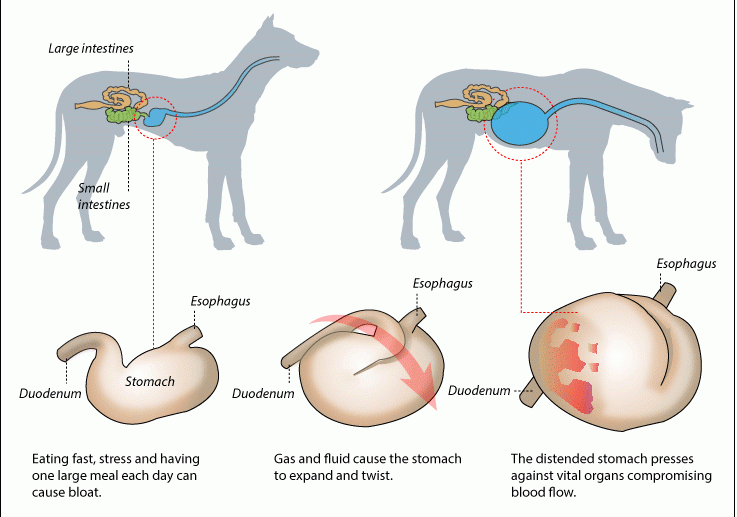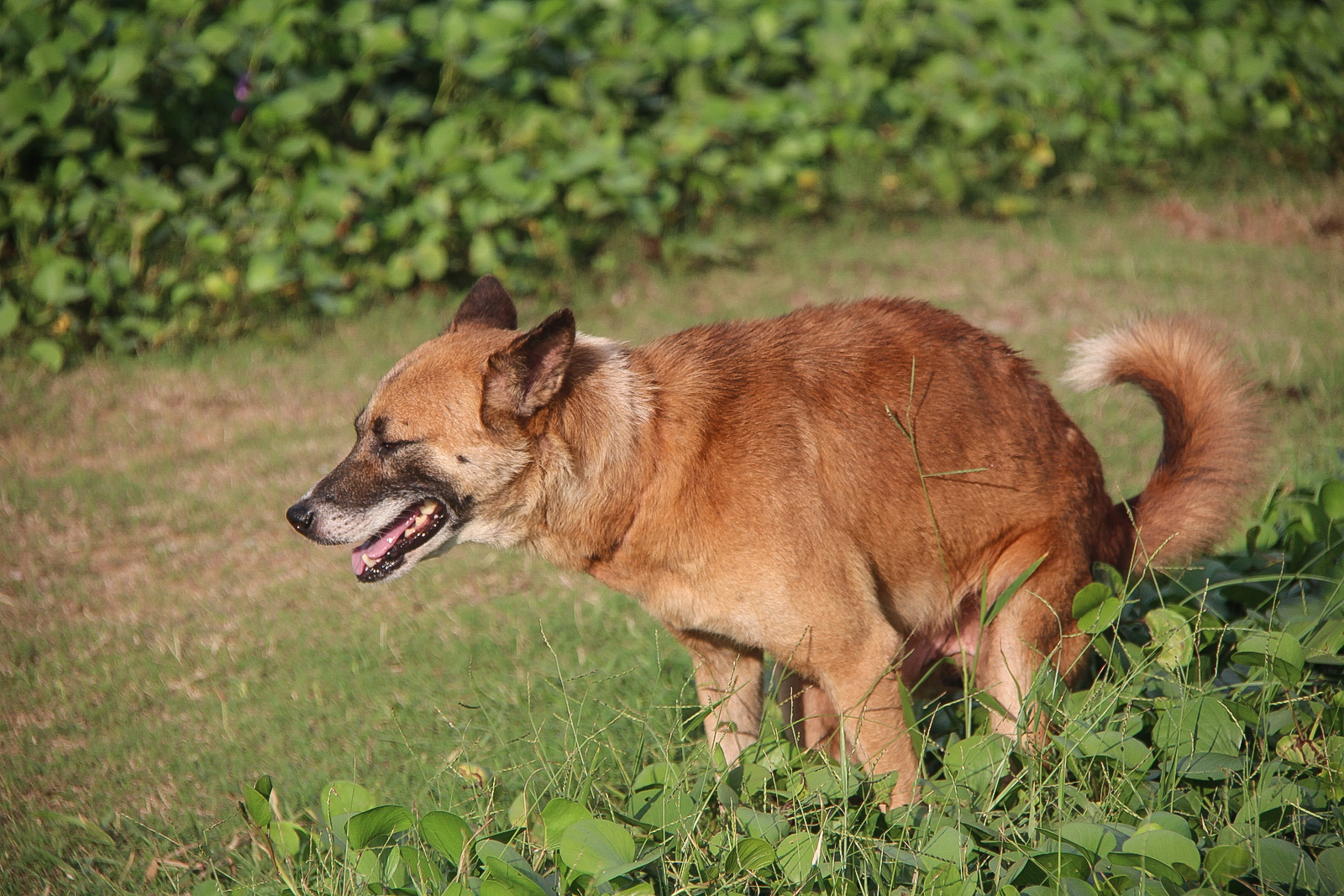Last Updated on November 7, 2023
Bloating in dogs is a very serious condition that often leads to death itself if left untreated. In fact, it is estimated that dogs have only 1 hour of time left before they succumb to this deadly killer. It is known that bloat is the 2nd dog killer in America, just behind cancer. What makes it more dangerous is that from the onset of bloat, it takes just an hour to kill the dog, while cancer is a slow-acting killer. It is hence important to know about the dangers of bloat in large dogs.
Dangers of Bloat in Large Dogs
Bloat, also known as gastric torsion or twisted stomach, is a serious and potentially fatal condition that can affect large dogs. It occurs when the stomach fills with gas, fluid, or food and then twists on itself, cutting off the blood supply to the stomach and other organs. This can cause a number of life-threatening complications, such as shock, damage to the stomach and intestines, and even death if left untreated.
Dogs, particularly large and deep-chested breeds, are more susceptible to bloat because their anatomy puts them at a higher risk for the condition. The deep chest cavity of these breeds, such as Great Danes, Saint Bernards, Weimaraners, and Bloodhounds, allows for more room for the stomach to rotate, and the stomach can also become twisted more easily. Additionally, the stomach of these breeds also tends to have a more “vertical” orientation, making it more prone to twisting.
How does bloat kill?
Bloat is a condition technically known as gastric dilation and volvulus syndrome (GDV). It is the process whereby the abdomen becomes enlarged and distended. When the onset of bloat starts, it enlarges the abdomen, twisting it and hence trapping air and food inside the abdomen. Veins will then be constricted, resulting in no blood flow to the heart and stomach lining. As the abdomen expands, it can cause organ failure and the dog will have a hard time breathing. If left untreated, the dog will simply;y die off after a few hours.

It is noted that larger dogs are more susceptible to bloat than smaller dogs. However, this does not mean that smaller dogs are immune from this problem; it just means that they have a smaller probability of having this issue. Having said that, not many people know about the dangers of bloat in large dogs.
Symptoms of Bloat
The onset of Bloat is usually very rapid. These are the following symptoms of bloat in your dog.
- Restlessness
- Excessive drooling
- Stomach looks larger than normal
- Feeble attempt at vomiting
- Drinking excessively
- Panting heavily
- Whining and pacing excessively
The following video summarizes most of the points mentioned above.
Can bloat be prevented?
To date, there isn’t any concrete evidence pointing to the causes of bloat. However, vets have identified the potential activities that can risk of bloat developing in dogs.
Vets aren’t sure what causes bloat, but they have identified some of the activities that can possibly raise the dog’s risk to it. They include
- Consuming food from a raised food bowl
- Having one large meal a day
- Too much running or playing after a meal
- Drinking water too rapidly
- Consuming food at a fast pace
- Stress (Click here to find out how to reduce stress in your dog)
We have said this before, but to reiterate the importance of this, if you own a large dog, then you will need know the dangers of bloat in large dogs. You will need to be able to recognize instantly that your dog is suffering from bloat, and you should seek emergency medical services immediately.
What are some of the risk factors that contributes to bloat in dogs
There are several other risk factors that can contribute to the development of bloat in dogs. One of the most significant, as stated above, is rapid eating. Dogs that eat their food too quickly are more likely to swallow air along with their food, which can cause the stomach to fill with gas and become distended. This can increase the risk of the stomach twisting on itself.
Another risk factor is feeding your dog one large meal per day. This can cause the stomach to fill with food and become distended, putting extra pressure on the stomach and increasing the risk of twisting. Instead, it is recommended to feed your dog smaller, more frequent meals throughout the day.
Stress can also be a contributing factor to bloat. Dogs that are anxious or stressed may swallow more air, which can cause the stomach to fill with gas. Additionally, dogs that have recently undergone surgery or experienced a traumatic event may be more prone to bloat.
Finally, it is important to note that some dogs are predisposed to bloat due to genetic factors. If a dog has a history of bloat or if a close relative has been affected by the condition, it is more likely that the dog will develop bloat as well.
Conclusion
Bloat is a grave concern for large dog breeds, and understanding its symptoms and taking immediate action can be life-saving. Prevention is key to ensuring the well-being of your majestic canine companion. Stay vigilant, be aware of the risks, and, most importantly, cherish the moments you have with your large dog. Your vigilance and care can make all the difference in safeguarding their health and happiness.
Source: https://pets.webmd.com
 Dog N Treats All dogs deserve to be pampered
Dog N Treats All dogs deserve to be pampered


